How To Set Up Your Plate Carrier: Full Combat Setup & Loadout
The right armor plate carrier setup can be a game-changer, and can quite literally save your life. Part of the value you receive when you buy a carrier comes from not only the protection, but the potential you have to customize it to be perfectly tailored for your needs. It is important that you take advantage of this to get the most out of it. But with so many options available, how do you know which setup is right for you?

In this step-by-step guide, we'll take you through the essential steps to choosing the perfect plate carrier setup for your mission needs. Whether you're a civilian, law enforcement officer, or military personnel, this article will explain the key factors needed for optimal protection and maneuverability. So, if you’re ready to take your plate carrier game to the next level, let's dive in!
What Is The Best Plate Carrier Setup?
When setting up the ideal plate carrier, balance is key. Distribute weight evenly across the front, back, and sides of your plate carrier for optimal comfort and mobility. Place heavier items centrally, hugging your body, to maintain stability. Try to keep your shoulder area open, ensuring nothing obstructs shouldering your rifle. The steps to achieve the best plate carrier setup include:
- Choosing the Right Plate Carrier: Select a carrier that suits your needs, balancing comfort, protection, and functionality.
- Selecting Body Armor: Pick the appropriate body armor based on the level of threat you anticipate.
- Correct Sizing and Placement: Adjust your plate carrier to fit snugly and ensure the plates cover vital areas.
- Planning Your Loadout: Consider essential items for your loadout, such as first aid kits, hydration packs, and ammunition.
- Positioning of Critical Accessories: Finally, strategically place mission-critical accessories for easy accessibility and to maintain an evenly distributed weight.
Choose The Right Plate Carrier For Your Mission
Be intentional about your goals in training or protection and model your plate carrier setup around your mission. The benefit of a plate carrier is that it is both modular and scalable. Therefore, you need to be thinking about potential ways for you to add/remove tactical gear and even scale your level of protection.

Do you want the carrier to be bulletproof on its own? Do you need it to be lightweight? Do you want it to be discreet? Here are some guidelines to help you take advantage of each feature.
Modular
A great perk of a tactical plate carrier is that it can help you efficiently carry your tactical gear in a way that is easily accessible. A lot of carriers come with MOLLE straps that allow you to add accessories like magazines, med kits, holsters, or any other gear you need on hand. This allows you to keep your eye on the target and quickly grab necessities.
Some tactical gear and accessories we recommend for your armor system would be MFAK/IFAK (medical first aid kits/individual first aid kits), magazine holsters, rifle accessories, and any administrative or mission-specific equipment that you see fit.
Medical gear should be placed somewhere that is accessible by both hands in case one arm were somehow injured. Magazine holsters for storing ammunition should be placed either on the front of the plate carrier or on the cummerbund of the non-dominant arm side.
Ammunition placement should be quickly in reach for an emergency reload. Administrative or mission-specific equipment may include batteries, pens, cellphones, radios, etc. Our suggestion is to remain minimalistic; more gear means more weight and restriction.
Scalable
The National Institute of Justice has many different standards for various threat levels of protection. The cool thing about plate carrier vests is you can scale your armored protection for different needs by adding rifle-rated plates. We will discuss how to scale your plate carrier from NIJ Level IIIA up to Level IV protection later in the article.
Traditionally, plate carriers were used in the military or law enforcement, but now they have become popular for civilian body armor. Plate carriers have been increasingly used by civilians for sports/training purposes.
Sometimes plate carriers are simply used for exercise. The added weight causes resistance and strain to build muscle and cardio strength.
Most plate carriers will be optimized in order to be either lightweight, bulletproof, or discreet. Some try to provide a balance of features. We have a range of plate carriers, each designed for different purposes.
Load The Right Body Armor Into Your Plate Carrier
What kind of plates or armor are you going to want to use? When loading a plate carrier with body armor, it is crucial to select the appropriate level of protection for your specific needs. Body armor standards are set by the National Institute of Justice (NIJ) and our body armor has been tested accordingly.

We go into more detail on each level of protection in our Understanding Body Armor Ratings article.
Begin by choosing armor plates that fit your body type and provide the necessary level of protection. Insert the armor plates into the plate carrier pockets, ensuring that they are centered and aligned properly. Next, adjust the plate carrier straps to achieve a secure and comfortable fit.
Keep in mind that a properly installed battle back plate is critical for protecting your vital organs, so take care to ensure that the plate carrier is properly secured and the armor plates provide adequate protection.
Level IIIA Plate Carrier Options
Some carriers include Level IIIA armor designed to fit different needs. There are also Level IIIA soft armor inserts that can be use with your plate carrier.
Rifle-Rated Carrier Options
Our Level III+ plates meet the Level III NIJ standard along with additional rounds outside of this standard. If you’re looking for a multi-hit capable, lightweight level III plate, look no further than the STRATIS III+ Enhanced plate.
For more information on rifle-rated body armor plates, check out our Rifle Plates 101 blog.

How should a plate carrier fit and how to wear a plate carrier
Getting a properly fitted plate carrier is not only important for your own comfort, but for safety as well. Nothing else matters if your carrier is in the wrong size. Take a look at the sizing chart in each product description to ensure that you are getting the proper size.
A plate carrier should fit snugly around the torso, without being too tight or too loose. It should be adjusted to sit comfortably on the shoulders, with the front and back plates centered on the chest and back respectively. The cummerbund should be adjusted to fit securely around the waist, with the Velcro straps fastened tightly but not so much that it restricts breathing or movement.
When wearing a plate carrier, the front plate should be centered on the chest, while the back plate should be centered on the upper back. The cummerbund should be fastened with the adjustable side facing forward, and the Velcro straps should be securely fastened. It is important to ensure that the plate carrier is not too loose or too tight, as this can affect mobility and comfort during use.

Ultimately, you want a tactical vest that doesn’t compromise your movements. It should be comfortable enough to let your arms move without restraint for shooting, accessing gear, running, or whatever movements your training demands. The last thing you want is for your plate carrier setup to slow you down, cause resistance, or interrupt muscle memory. All of our plates and plate carriers are designed with these things in mind.
Where should a plate carrier sit on your body?
A great fitting carrier secures the body armor plates without adding resistance to your range of motion. A snug cummerbund also helps to reduce the pressure on your shoulders. Armor vests should extend roughly from right below the collarbone to the base of your rib cage.
The priority of ballistic protection should be to cover your vitals. Your vest protection should start two fingers’ width below your collarbone. A common mistake is to wear a body armor system too low in an attempt to cover the stomach, compromising the armored protection of your vitals in the upper chest. Covering the cardiac box, where your most vital organs like the heart and lungs are located, is crucial.
Getting shot in the stomach simply has a greater survival rate than getting shot in the upper chest. You should always emphasize your armor around the areas that are most vulnerable.
Mission Critical Items for your plate carrier loadout
Think of your plate carrier as a toolbox. Take advantage of this by making sure you are using it effectively. You should be thinking of all the different items that are needed for your mission
When setting up a plate carrier, it's essential to have a well-thought-out loadout of mission-critical items. Items in your “load out” may include plate carrier accessories like magazine pouches, medical supplies, communication gear, and other plate carrier essentials that will aid in the completion of the mission. Proper configuration of a plate carrier can make all the difference in terms of performance and readiness in high-pressure situations. The next couple of sections will discuss different ways to think about your kit setup.
Pistol Setup For Your Plate Carrier
When setting up your plate carrier for pistol use, there are a few options for holster placement.
One popular option is a drop-leg holster, which can be attached to the cummerbund or molle attachments. Another option is a holster that attaches directly to the plate carrier, such as on the shoulder strap or a chest rig add-on. This can allow for quicker and more efficient access to your firearm in those situations. This setup is often used by pilots and other professionals who are required to sit down for their job.
Common considerations when choosing a holster include retention capabilities, ease of access, and compatibility with your specific pistol model. It's important to practice drawing and firing your pistol from your plate carrier setup to ensure efficiency and accuracy in a real-life situation.
Radio Setup For Comms
Communication is crucial in any tactical situation, and having a reliable radio setup on your plate carrier is essential. When it comes to placement, there are a few options to consider. Some people prefer to mount the antenna on the shoulder strap of their plate carrier, while others prefer to have it attached to the back or side.
Common considerations include the type of tactical radio being used (such as a Baofeng military radio), the type of antenna needed, and the push-to-talk (PTT) button location.
Make sure to choose a radio and antenna setup that offers clear and reliable comms, and that the PTT button is easily accessible while wearing your plate carrier.
Admin Pouch For Plate Carriers
An admin pouch is a versatile addition to your plate carrier setup, providing storage for small essentials such as pens, notepads, and ID cards.
When considering placement, many people opt for a molle pouch attachment to use as a front pouch for their plate carrier or chest rig. Each of these can be added to the plate carrier in order to provide additional storage and organization.
Another popular option is a tactical kangaroo pouch, which sits on the front of the plate carrier and offers quick access to essential items. Common considerations include the size and capacity of the pouch, as well as the type of closure mechanism (such as a zipper or buckle).
Our MAAP admin pouch is designed specifically for plate carriers and offers both functionality and durability.

Keeping Magazines Handy With Mag Pouches
Mag pouches are essential for keeping ammunition handy on a plate carrier. There are several options for placement, including on the front, sides, or back of the carrier.
When choosing mag pouches, common considerations include the type of holder, the material, and the size.
It's also important to choose mag pouches that fit the specific type of ammo you're carrying, whether it's pistol mags or AR mags.
Many of our customers pair our plate carriers with Kydex mag pouches, because of their durability and retention capabilities.
The number of mag pouches needed will vary depending on the mission and personal preference. Most people carry 1-5, but overseas soldiers are required to carry 7 in total.
Tactical Knife Plate Carrier Placement
When it comes to plate carrier knife setups, there are several options for placement. Some plate carriers feature a built-in knife sheath on the shoulder strap or the cummerbund, allowing for quick and easy access to the blade. Alternatively, a knife can be attached to the plate carrier using a molle knife attachment, which can be secured to the front or back of the carrier.
Common considerations for choosing a knife for your plate carrier setup include the type of blade, such as a Kabar or other tactical knife, and the length of the blade.
Plate Carrier Setup of IFAK – First Aid & Tourniquets
Any trained professional knows that things can and will go wrong. It is always a good idea to be prepared for these situations. A plate carrier equipped with an Individual First Aid Kit (IFAK) makes you, and everybody around you much safer.
There are several approaches you can take for placement. Some people prefer attaching it to the cummerbund, while others find it easier to attach it to a shoulder strap, or molle attachments.
Common considerations when choosing an IFAK include the type of trauma and medical supplies included. A good IFAK will include tourniquets, bandages, and chest seals. It's important to have easy and quick access to the IFAK in case of an emergency.
The PBA bleed kit is our own plate carrier med kit and contains everything you need while remaining compact. Additionally, the MAAP (Medical/Admin/Assault Pouch) can be used to carry additional medical supplies on the plate carrier.
Different Plate Carrier Setups Based On Your Mission Profile
This is where you may need to get creative and prioritize different items based on importance, putting your gear where it is most accessible. While it may seem a bit confusing at first, there are many people who have thought this through so that you don’t have to.
Plate carriers are versatile pieces of tactical gear that can be customized to fit a variety of mission profiles. Whether you're a civilian preparing for an emergency situation or a member of law enforcement or the military, there are many different plate carrier setups to consider.
In the next few sections, we'll explore some plate carrier setup ideas based on your specific mission profile.
Civilian plate carrier setup
A civilian plate carrier setup helps regular people prepare for a range of situations such as mass shootings, natural disasters, and bug out scenarios, among others. Unlike military or law enforcement plate carriers, civilian setups may not need to accommodate heavy armor plates or other specialized equipment, but a plate carrier is still an essential prepping item.
The focus of a civilian plate carrier setup is on practicality, portability, and versatility. Key components of a civilian setup may include a lightweight carrier with a simple MOLLE system for attaching modular pouches, pockets, and accessories. A chest rig or bandolier with additional pockets for magazines, tourniquets, and other medical supplies may also be included.
The placement of items in a civilian setup may differ from the placement of the same items in military or law enforcement setups. For example, a chest rig may be placed higher up on the chest, allowing for easier access to magazines and medical supplies. A backpack or fanny pack may also be incorporated into the setup for carrying additional items.
A civilian plate carrier setup may not include heavy armor plates, but it should still provide adequate protection in case of an emergency. Soft armor inserts or lightweight ceramic plates can provide sufficient protection while also allowing for ease of movement and mobility.
Home defense plate carrier setup
A home defense plate carrier setup is designed to provide maximum protection and readiness for individuals and families facing a home intrusion. This setup focuses on close-quarters combat/close-quarters battle (CQB) scenarios, such as a burglar or intruder entering a home. The main goal should always be to protect your family by providing a tactical advantage.
One essential component of a home defense plate carrier setup is a shotgun plate carrier. This carrier is specifically designed to hold a shotgun for quick and easy access in case of an emergency. The carrier should also provide protection against potential threats, such as knives or bullets.
The placement of items in a home defense plate carrier setup may differ from other setups. For example, a shotgun holder may be placed in the center of the chest for easy access, while additional pouches for shotgun shells and other equipment may be placed on the sides or back of the carrier. A medical kit should also be included and placed in a location that is easily accessible.
A home defense plate carrier setup should prioritize mobility and flexibility, as movement and agility are essential in CQB scenarios. Therefore, a lightweight carrier with minimal accessories may be preferred over a heavily loaded carrier.
Military plate carrier setup
This setup is what many think of as a tactical plate carrier setup and it is designed to provide maximum protection and functionality for infantry and special forces personnel in high-risk combat situations.
A key component of a military plate carrier setup is the Soldier Plate Carrier System (SPCS), which is the standard-issue plate carrier used by the United States Army. The SPCS is designed to provide ballistic protection while also being lightweight and comfortable for extended use.
Other items that may be included in a military plate carrier setup include ammunition pouches, radio pouches, and medical kits. The placement of these items will depend on the specific needs of the soldier and the mission they are undertaking. For example, infantry soldiers may prioritize ammunition accessibility, while special forces personnel may prioritize communication and medical equipment.
The placement of items in a military plate carrier setup is typically based on established military tactics and training. Soldiers are trained to quickly and efficiently access their gear in high-stress combat situations, so the placement of items must be intuitive and accessible.
Law Enforcement plate carrier setup
One key component of a law enforcement plate carrier setup is the duty vest setup or outer carrier. This is a type of bulletproof vest that can be worn over a regular uniform, providing additional protection without sacrificing mobility or comfort. Duty vests are typically lightweight and designed to be worn for extended periods of time.
Other items that may be included in a law enforcement plate carrier setup include ammunition pouches, radio pouches, and other specialized equipment depending on the needs of the officer or department. Unlike military setups, law enforcement plate carriers may not include medical kits or other specialized equipment for treating combat injuries.
The placement of items in a law enforcement plate carrier setup may also differ from other setups based on the specific needs of the officer or department. For example, a SWAT team member may prioritize ammunition accessibility and have more pouches for rifle magazines, while a patrol officer may prioritize communication and have more radio pouches.
SWAT plate carrier setup
A SWAT plate carrier setup (sometimes referred to as a “tac vest”) is designed to meet the unique needs of SWAT team members who are often called upon to respond to high-risk situations.
One key component of a SWAT plate carrier setup is the Tac vest or tactical vest. This is a type of plate carrier that provides maximum protection and comfort for extended periods of time. SWAT team members often carry a variety of specialized equipment and tools such as breaching gear, flashbangs, and gas masks, so the placement of these items is critical.
Unlike other setups, a SWAT plate carrier may include specialized equipment such as breaching tools, which are used to gain entry into locked doors or windows. The placement of these tools is crucial to ensure quick access when they are needed. Additionally, SWAT team members may carry more flashbangs or smoke grenades than other setups to provide tactical advantages during high-risk operations.
The placement of items in a SWAT plate carrier setup may also differ based on the specific needs of the team. For example, the breaching gear may be located on the front of the plate carrier for quick access during forced entry operations. Similarly, radio pouches and communication devices may be placed on the back of the carrier to prevent them from interfering with other gear during operation.
Minimalist or Slick plate carrier setup
A minimalist or slick plate carrier setup is a stripped-down version of the traditional plate carrier that offers maximum mobility and flexibility with minimal weight and bulk. This setup is ideal for civilians who need a lightweight and low-profile plate carrier setup for everyday carry, such as personal protection or survival situations.
The minimalist plate carrier setup carries only the bare essentials. This includes a chest rig, hydration carrier, and radio pouch. The focus is on keeping weight and bulk to a minimum while still providing adequate protection and functionality.
Unlike other setups, a minimalist plate carrier may not include additional items like medical kits, ammunition pouches, or other specialized gear. This is because the emphasis is on maintaining a low profile and reducing unnecessary weight.
One advantage of having this setup as opposed to a regular bulletproof vest is that more protection can easily be added or swapped out if needed in the future.
The placement of items in a minimalist plate carrier setup may also differ from other setups. For example, a chest rig may be worn higher up on the chest to provide maximum mobility and avoid interference with other gear. Similarly, hydration carriers may be located on the back of the carrier to minimize bulk and weight.
Medic plate carrier setup
The medic plate carrier setup is specifically designed for those who are trained in providing first aid and treating trauma in emergency situations. The setup includes a variety of medical supplies to stop bleeding and treat wounds. This should include tourniquets, bandages, chest seals, hemostatic agents, and other life-saving equipment. The placement of these items is critical for quick and efficient access during emergencies.
The medic plate carrier emphasizes the need for accessible and easily identifiable medical supplies. This setup is typically worn by trained medical personnel such as paramedics, EMTs, and combat medics. The placement of items is usually centralized and easily accessible, allowing for quick and efficient access to supplies during emergencies.
It is crucial to have the necessary supplies on hand and be able to access them quickly and efficiently. The placement of the medical equipment should be intuitive and well-organized to reduce the chance of confusion or fumbling in emergency situations. This setup should be well thought out and memorized so that you are able to act quickly in life-threatening situations.
How is a plate carrier different from a bulletproof vest?
Bulletproof vests are typically made of soft body armor and are often concealable. In contrast, plate carriers are external vests intended to hold body armor plates. Plate carriers are more commonly used for tactical purposes as they allow the wearer to switch between varying levels of protection.
While plate carriers are arguably the best option from a tactical standpoint, bulletproof vests will always be a simple, straightforward solution for many people looking to protect themselves.
The best plate carrier setup is the one you design
Always remember that your plate carrier system ultimately comes down to your unique set of goals and your personal preference. Use these ideas to bounce off and create the ultimate plate carrier system for your needs. Your tactical vest setup should reflect your mission. Take time to really think this through, and look for versatility, durability, maneuverability, and keep it as light as possible.
If you’d like to dive deeper into the world of body armor, we have plenty of great resources for you to check out. Here are some articles that you may find interesting:

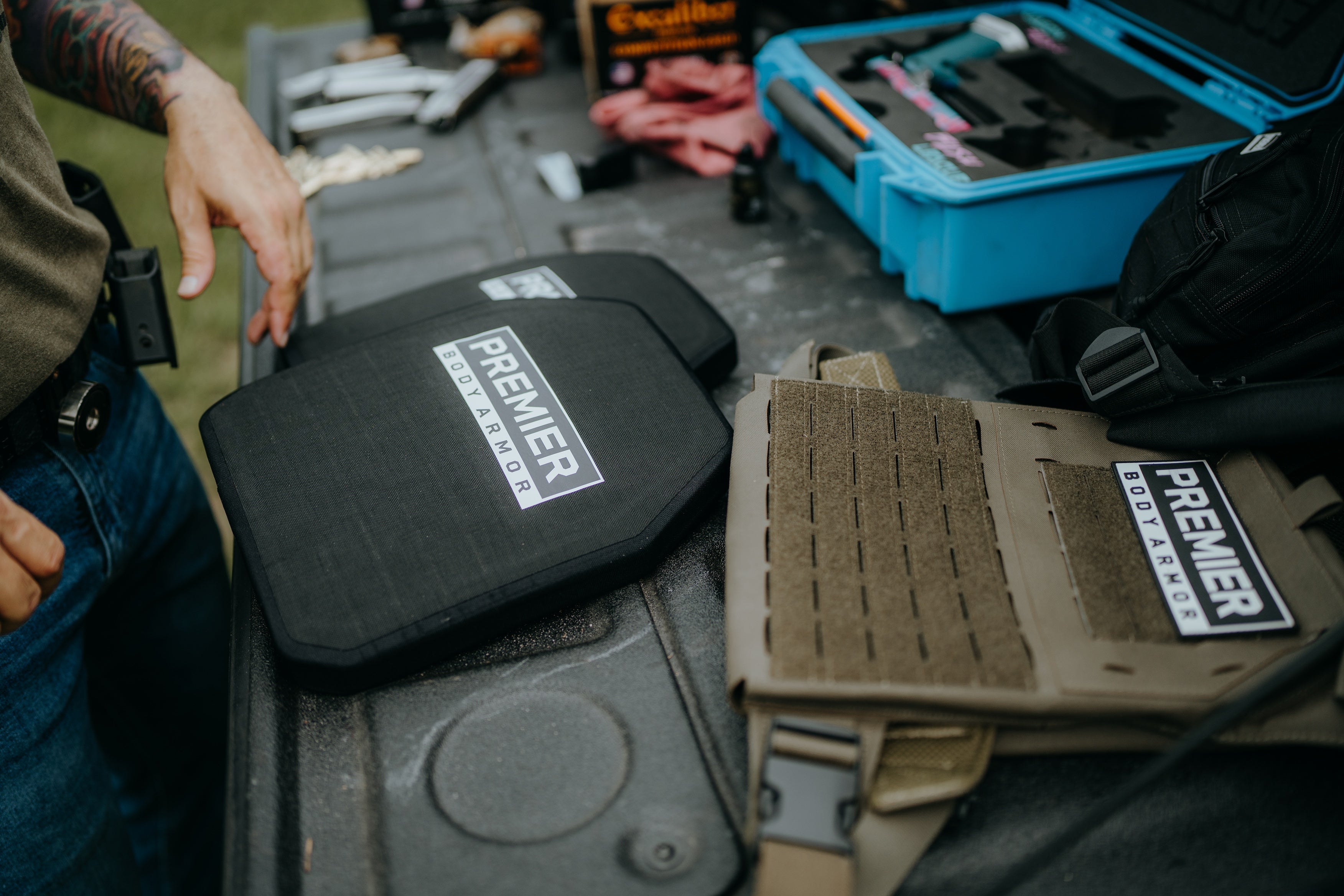
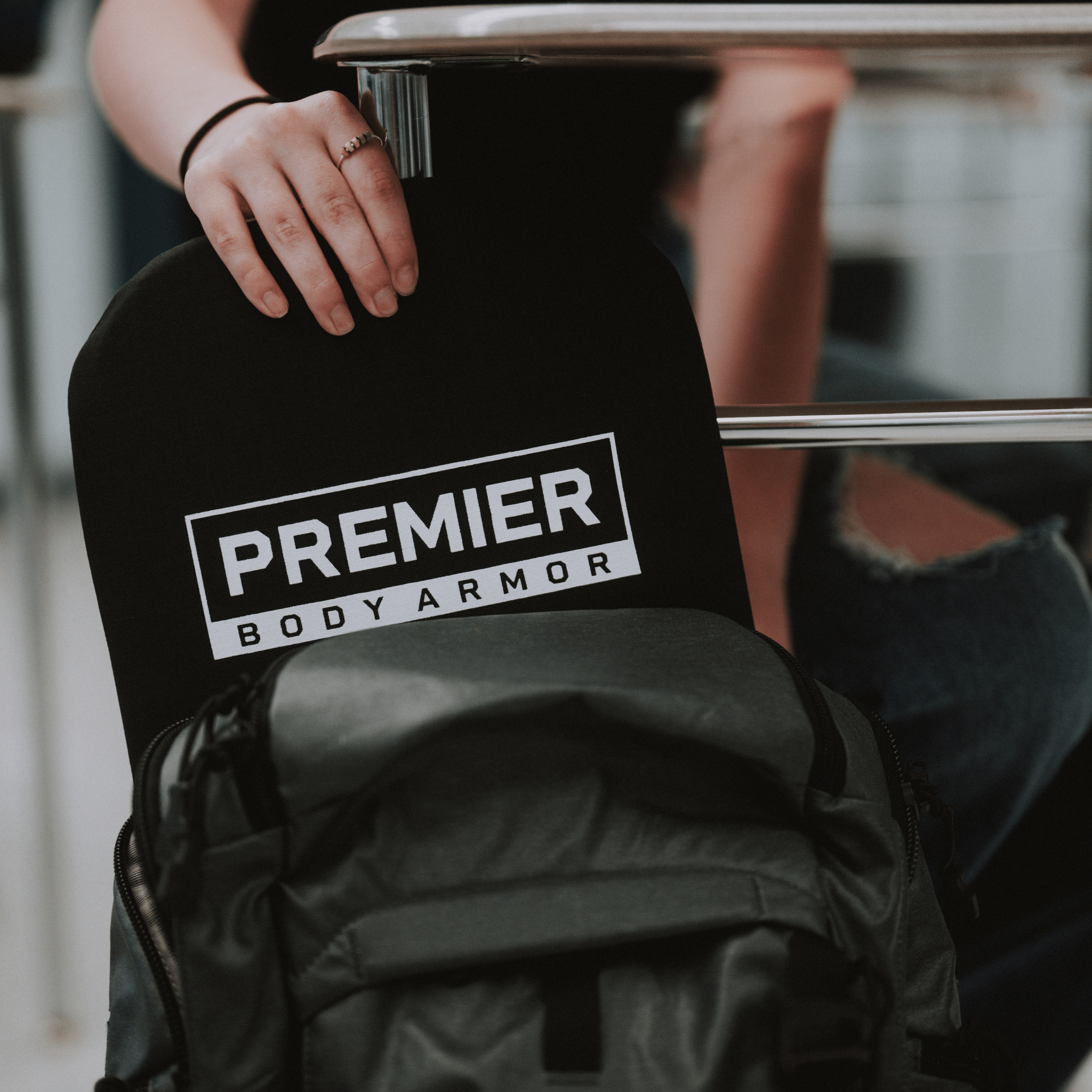
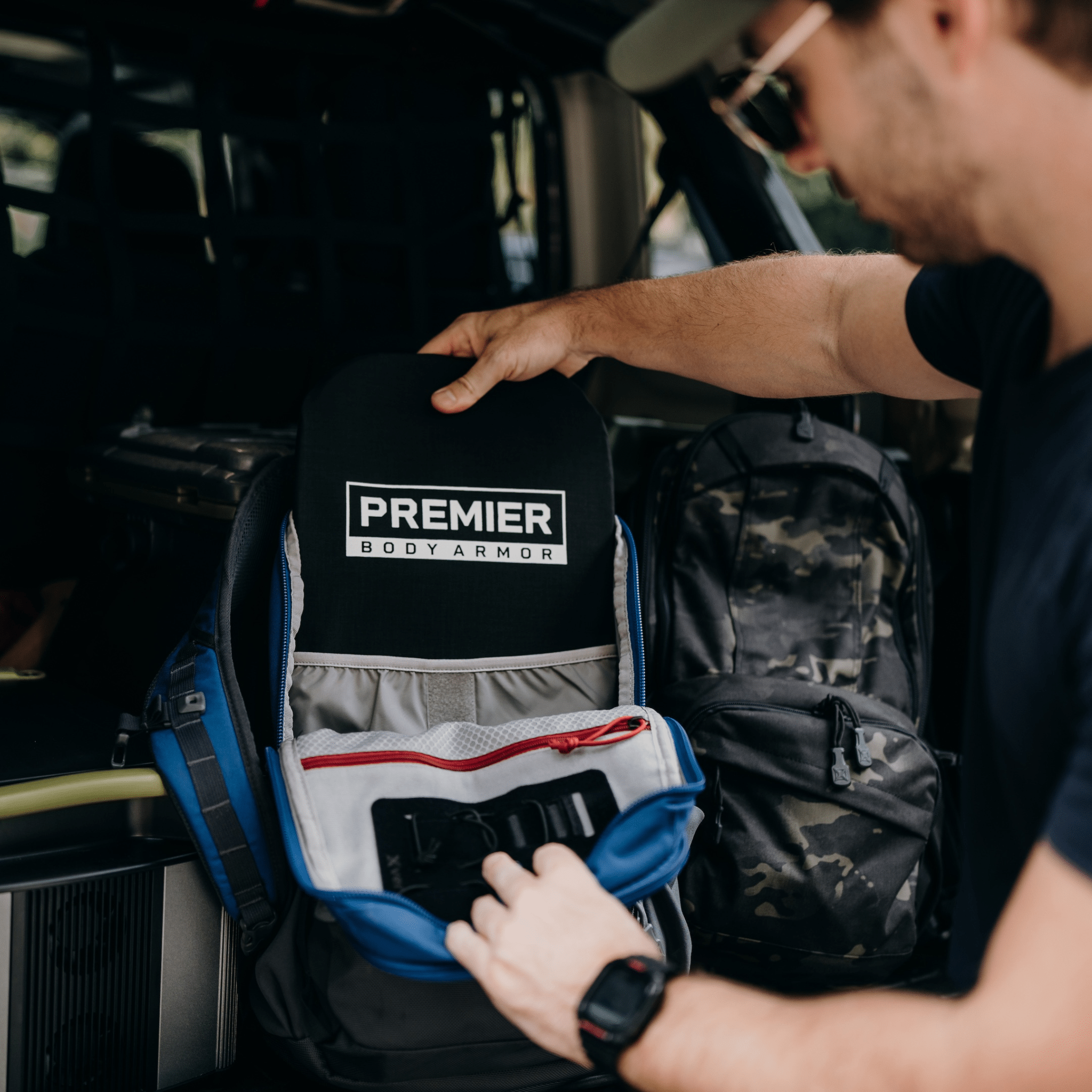
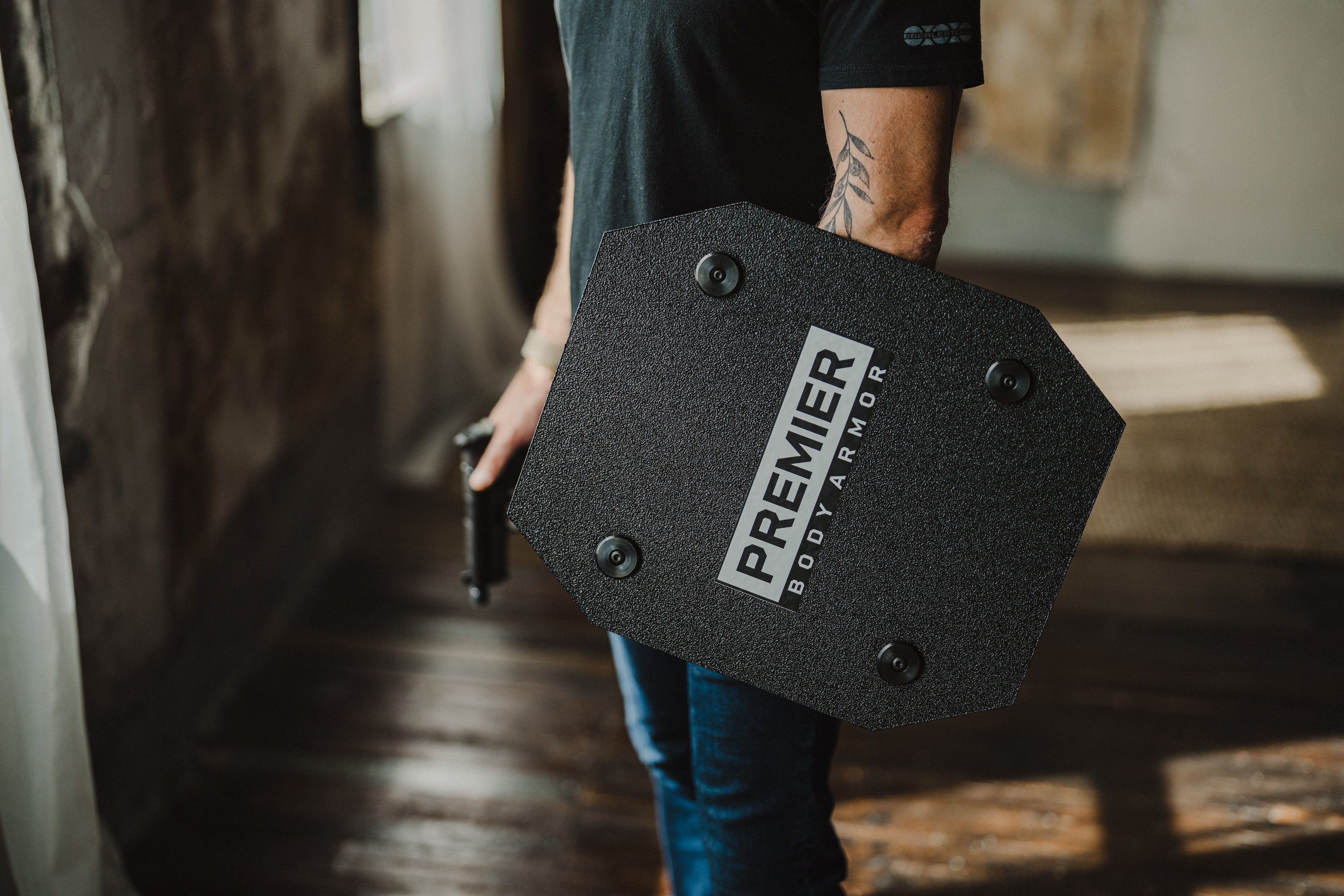




Your product has a lot of advantages over the old style flack jackets and heavy steel plates! I have seen demonstrations of rounds fired at rubber dummies and it was impressive. The price points are very affordable and they should sell very well.
Leave a comment